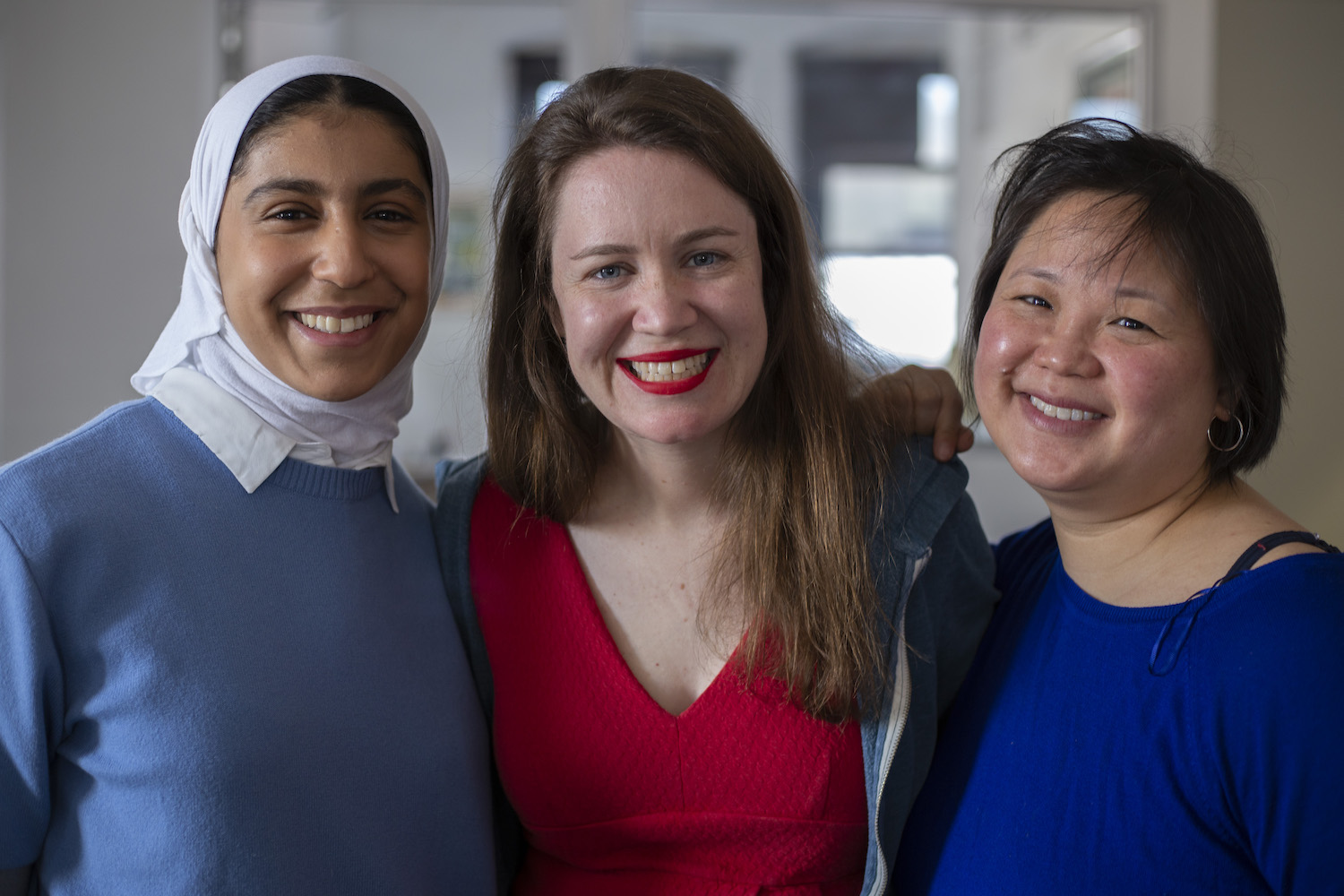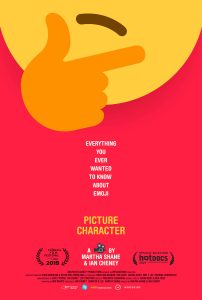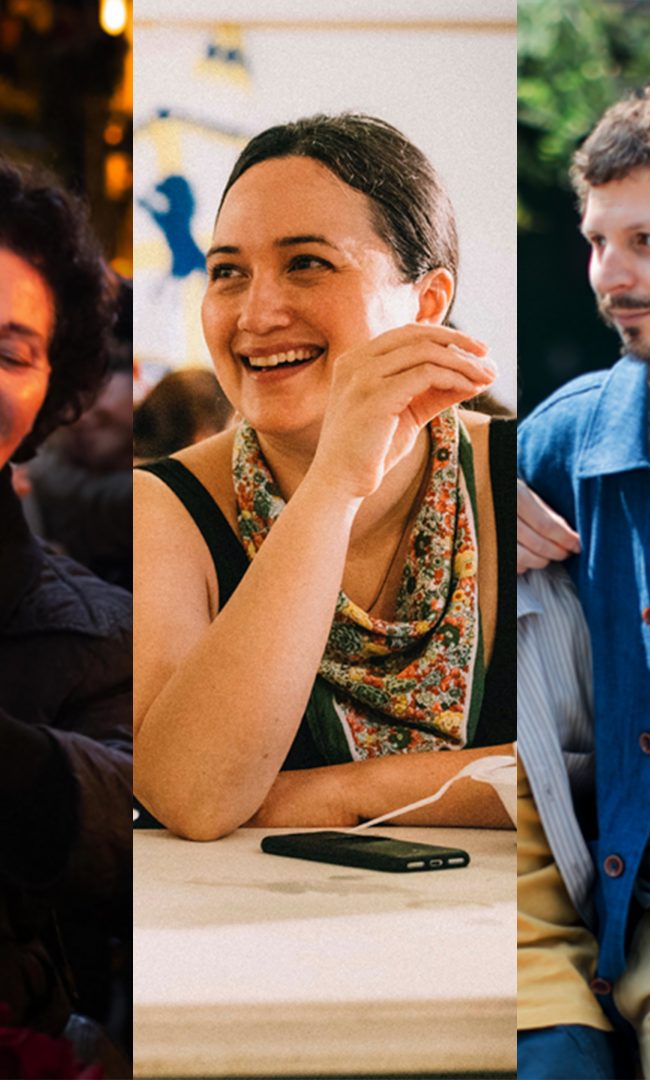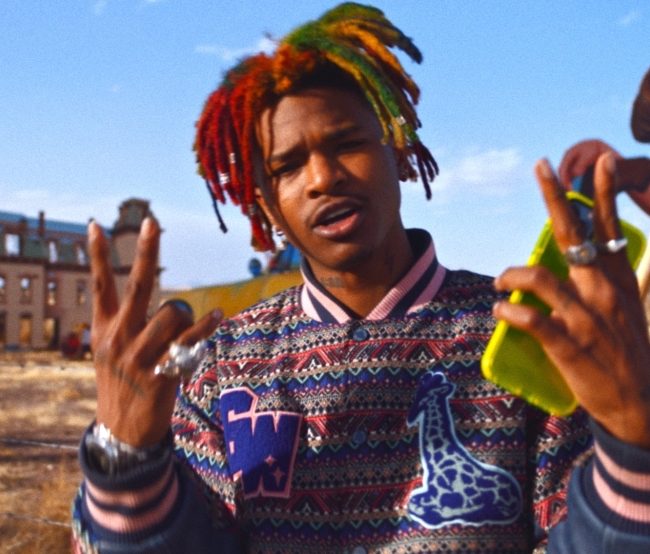A Conversation with Martha Shane, Jennifer 8. Lee and Rayouf Alhumedhi (PICTURE CHARACTER)

I met with co-director Martha Shane (After Tiller) on Monday, April 29, 2019, along with producer Jennifer 8. Lee and one of their subjects, Rayouf Alhumedhi, at the 2019 Tribeca Film Festival to discuss their collaboration on the new documentary Picture Character (which I also reviewed). The other co-director, Ian Cheney, was at another film festival. The film chronicles the rise of emojis, which were created in 1997 by Japanese inventor Shigetaka Kurita, and have since grown into a global phenomenon. How, why and by whom are new emojis released into the digital ecosphere every year, and are they representative of the world’s many cultures, as well of gender and more? These questions are explored in what is, by its end, a film equally entertaining as it is informative. What follows is a condensed digest of our conversation, edited for length and clarity.
 Hammer to Nail: Martha, how did you and co-director Ian Cheney meet and decide to collaborate on this film?
Hammer to Nail: Martha, how did you and co-director Ian Cheney meet and decide to collaborate on this film?
Martha Shane: So, Ian and I were friends through the festival circuit, and he approached me about making this film, I think, back in 2016. The original idea actually came from our producer, Jenny 8. Lee, who realized one day that there wasn’t a dumpling emoji, and she was like, “I need the dumpling emoji.” (laughs) So, she sort of went on a deep dive and discovered this organization called Unicode that was regulating all the emoji.At some point in this process, she did eventually get the dumpling emoji as well as a Chinese takeout container, and some chopsticks, I think, and at some point, along the way she was like, “This needs to be a documentary.”
So, she talked to Ian – they had worked together before – and Ian talked to me.I immediately remembered this text conversation I had had with a friend many years earlier, probably in 2012, when we were just texting back exclusively in emoji just for like a week, trying to communicate only with emoji. Even though it was like a hilarious and ridiculous endeavor, it also sort of made me think more critically about the possibilities and the limitations of the emoji set. So, that’s how we ended up here today.
HtN: Prior to making this film, you knew nothing about Unicode so, how did you being the process of research that eventually led you to your many subjects, including Rayouf here? Could you describe that research process of gathering all the copious materials before making the film?
MS: It was an interesting process. Originally, I thought the film would be a lot more focused on the design of emojis, more like a Helvetica documentary. But, through Jenny, who has her hands in all things emoji, we heard about the Unicode Consortium. She also introduced us to Rayouf. She sort of knew about all the emoji that were coming down the pipeline before anyone else did. So, ultimately, it was amazing to have her as a kind of emoji mole, doing our recruiting and introducing us to people. Then, when it came to the shooting and editing, we had a kind of creative firewall because Jenny’s over here doing her real emoji work and then we’re making the film and the decisions around that.It just immediately became clear that this sort of high-stakes competition element that comes in with Unicode, and with all the emoji that are being presented to Unicode, would be a more dramatic structure for the documentary than we could have imagined at the very beginning.
HtN: So, Rayouf, you proposed the hijab emoji. Can you walk us through the process of application? You have this idea, where do you then go from there?
Rayouf Alhumedhi: So, the idea was honestly in the back of my mind for the longest time. I didn’t know how to go about it because the idea of creating an emoji isn’t the most accessible type of information, you know? So, I was like “OK, I’ll start small.” I emailed Apple customer service, “Hey, please, this emoji is necessary for representation.” I obviously didn’t get a reply back. Then, one day, just coincidentally, I saw on Mashable a Snapchat story about how to create an emoji. After that, I followed the entire guideline which was available on the Unicode Consortium website that gives you an idea of what they’d like to see to make your proposal most refined and most likely to pass through the submission process.
I followed that and I sent it over and Jenny 8. Lee replied back in 3 days, which was a good sign because on the website it says 30 days is when you should be hearing back. She helped me get in touch with Alexis Ohanian who is the co-founder of Reddit, and who really made the proposal as robust as possible, and I think the application process lasted 3 months from it’s being proposed and it being accepted. Then, its release happened almost exactly a year later.I think, for me, the length of the process was an exception because it was, I think, pretty short relative to other emojis.
MS: Yeah, I think that is short.
RA: I think it all depends on what the emoji is; how everything is going to play out depends on that, of course.
HtN: So, what is the average time?
MS: That’s actually a really good question, and one of the things about the Unicode Consortium that we learned while making this is that they don’t really keep detailed records or statistics on anything. They have a website that one journalist described as “the hidden temple”, because it’s just full of these documents that are kind of buried and arranged in this maze-like fashion. It’s just very hard to figure it out but I was so amazed when I met Rayouf for the first time and to see this proposal and the level of detail that you had to get in. These are 20-page proposals with statistics. Not only that, but having to go to this Unicode Consortium and present to them in person was really an incredibly daunting undertaking. But [to Rayouf] you were very brave.
RA: It was honestly really scary, yeah.
MS: Jumping in there, yeah.
HtN: [to Jennifer 8. Lee] Can you describe your process, then, in conceiving of this idea and pushing it forward?

L-r: Rayouf Alhumedhi, our Chris Reed, Martha Shane and Jennifer 8. Lee
Jennifer 8. Lee: So, in August 2015 I was texting with my friend Yiying Lu, who is a designer famous for the Twitter Fail Whale. I sent her a picture of dumplings, she sent me back emoji, “Yum, yum, yum, yum”, knife and fork. There’s this pause and she’s like, “Oh, Apple doesn’t have a dumpling emoji,” and I was like, “Oh, that’s really strange.” because there are so many Japanese foods on the emoji keyboard. All kinds of things like tempura, and sushi, and even like the strange things, like the pink and white swirl and little triangle thing that looks like it’s had a bikini wax.
So, I was like, “How could there be no dumpling?” Because dumplings are this universal food with empanadas, and momos, and gyoza, and khinkali, ravioli. So, I guess my attitude was, knowing nothing about emoji, that clearly the system is broken. If there’s no dumpling emoji, the system has failed. So, I just went online and Googled, “Where do emoji come from?” I discovered they’re controlled by this cabal of large U.S. multinational tech companies. So, I proposed the dumpling emoji, did a Kickstarter that created a group called Emoji Nation, whose motto is, “Emoji by the people, for the people.”
For Unicode, you can join and show up in a meeting for $75. If you’re a company and you want to vote, you pay $18,000.So, I went, and the meeting was slightly absurd. It was like these older, mostly white, mostly male, mostly engineers, debating on, like: pancake or pancakes? Beans, what color beans? Should it be red beans, black beans, pinto beans? Peanuts went through okay but, milk, should it be a glass of milk? A carton of milk? I was like, this is not the group that should be proposing or, really, regulating a universal digital language because they’re mostly not designers. From that I was like, this is a great doc. I had done The Search for General Tso with Ian Cheney, before, which is on how Chinese food is all American. So, I just texted him and said, “Let’s talk emoji,” and then heard nothing because he was having a baby at that point.(laughs) So, we actually know exactly how old the documentary is by how old his son is.
MS: It’s the same exact date.
J8L: Yeah, almost like the same exact date. We’re like, “How old is Flipper now?,” and it’s, “Almost 3 and a half,” and I’m like, “That’s how long we’ve been working on this?” So, then I texted him and then finally when he came out of the darkness of the first couple of months of having a kid, he was like, “Yes!,” and let me bring on Martha. That was basically it, yup.
HtN: So, since Rayouf is here, in the process of designing this hijab emoji, how many designers did you work with? How did you find them?
J8L: So, we worked with maybe 2, 3, or 4 designers, depending. There’s one main designer whose name is Aphee Messer, who is at least partially Filipino, partially Native American and, partially white or Caucasian. She’s the one who actually did the many different versions of the hijab emoji, the ones that have spread virally around the world when the news articles about Rayouf’s work got caught in an international frenzy, in all different languages. There was like Greek, and Indonesian, and Arabic. All these articles about Rayouf’s work were actually a demonstration of the importance of Unicode because they were all encoded, they were all written. I was like, “That’s how we know better, a demonstration of why we need Unicode.”
HtN: So, Rayouf, how much opportunity did you have to tweak the design as it was developed?
RA: So [to Jenny], you got in contact with Aphee Messer and then I got in touch with her through you. I remember us having a conversation about the colors, and the initial design was a dark blue headscarf, and then we changed it to beige, a more neutral color, so the interpretation can be somewhat neutral if you can control that in any way.As a supplement to the main hijab emoji we added a guy in a bisht, which is basically the Arabic, or the Saudi, Middle Eastern headscarf for a man. We added to supplement, like compare and contrast, what else could come with it. I think I had a bit of a role, but honestly, the designs were really amazing. Because when the vendors look at it, it leaves room for interpretation. It’s not something so concrete, that’s what I liked about it.
J8L: Yeah, I remember having the debate, do you show the hair, do you not show the hair? Do you show the neck, do you not show the neck? Do you show the ears, do you not show the ears? Different parts of the world actually wear the hijab slightly differently and so Aphee had to go deep into trying to figure out which was the version to propose.One of the reasons that we actually proposed the man with headscarf was, just a couple months prior they had passed all of the female and male professions. Up until a certain point the only roles that you could be as a woman on the emoji keyboard were princess, bride, dancer, and Playboy bunny. Then in 2015, Google came with a proposal that was like, “Let’s add things like professor, and scientist, and farmer, and artist.”So, as the male and female professions kind of became standard we realized that we would have to do pairs, and one of the things that we wanted to do was like, “Oh, well here’s a pair.”
HtN: One more question on design: why, given that this is supposed to be universal code, are there different versions of the emoji for different sites and apps? Because let me just say for the record that I hate the Facebook versions of all emojis, period. They’re ugly and they take nice designs and turn them into something horrible. Why? Why is there not one universal standard?
J8L: So, what Unicode does is it says there is a letter B, right, or there is a Chinese character for good – “Hǎo” – but at the same time there’s Times New Roman, and Bodoni, and Arial, and Helvetica; all the different fonts. Everyone interprets the letter B in different ways, right? So, that’s basically what Unicode is saying. There will be a wine glass emoji, and then all the vendors run around kind of trying to figure out well, what does that look like?
What the vendors are trying to do is to at least coordinate so that if you’re going to do a bagel emoji, you’re at least consistent or, if you’re going to do the pinching fingers, pinching-hand emoji, it’s going to be consistent.I would say most people play pretty well on that, except for Apple. Apple is always like a black box and so, we have no idea what their emoji look like until World Emoji Day, then it’s like global news. Like, “Does the bagel have cream cheese or not?” Yeah.
HtN: That’s interesting. So, Martha, I’ve only ever directed films by myself, although obviously film is a collaborative art. You’ve now made a few films, including After Tiller, directing with someone else. In your collaborative process, particularly in this film, how did you divide labor?
MS: So, it was really fun working with Ian on this film. He, as Jenny mentioned, had just had a child when we started the process. So, the way we split it up was that I went on pretty much every shoot. I directed every shoot and he was on about half of the shoots. Then we were both extremely involved with the post-production process. I think, for me, when I think about what films I want to make, it’s really about the topic and I enjoy the process of getting to know someone through collaboration. So, I got to know Ian in a way that I never would have before, and I ultimately was just so drawn to the idea of making a film about emoji.
It seemed crazy that we have these emoji on our phones and we use them every single day, but most people haven’t really thought critically about them. I kept thinking, in the future, a million years from now, if aliens discover our phones and they’re looking at these, what will they learn about our global society from studying these? So, that’s what drew me to making the film.
J8L: Right, and I’ll make a tiny little point just for fun on that.One of the things we had touched on was that there’s a generation of kids who are learning to, quote, “Read and write emoji before they can read and write their native language.” So, the way that they communicate and the way that their language skills are developed are very much shaped by what is on the keyboard. So, it’s all the more important for us to make sure that it’s a good keyboard.
HtN: And as inclusive as possible.
J8L: Yes.
HtN: Great, well thank you all!
– Christopher Llewellyn Reed (@chrisreedfilm)
Like what you see here on Hammer to Nail? Why not pay just $1.00 per month via Patreon to help keep us going?











